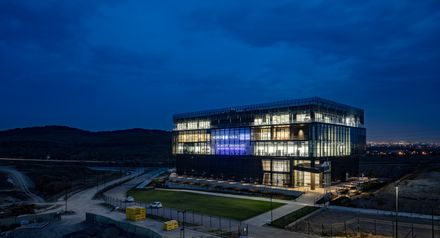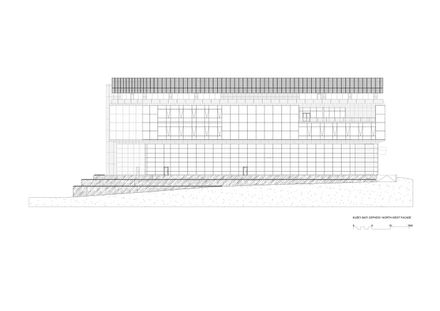
Kordsa Global - Sabancı University Composite Technology Research and Development Centre
KORDSA GLOBAL - SABANCI UNIVERSITY COMPOSITE TECHNOLOGY RESEARCH AND DEVELOPMENT CENTRER
Piramit Architects
ARCHITECTS
Piramit Architects
CLIENT
Kordsa Global
MANUFACTURERS
KAZA, SISECAM, TRİMLİNE
LEAD ARCHITECT
Mehmet Toydemir
FIRE CONSULTANT
Etik Engineering
LANDSCAPE
Spiga Peyzaj
INTERIOR ARCHITECTURAL DESIGN
Ayse Toydemir Chamuleau
CIVIL ENGINEERING
Balkar Engineering
MECHANICAL ENGINEERING
Detay Engineering
ACOUSTICS
MEA-akustik
INFRASTRUCTURE
Mesciooglu Engineering
ELECTRICAL ENGINEERING
RT Engineering
AREA
17000 m²
PHOTOGRAPHS
Yercekim Architectural Photography
CATEGORY
Research Center, University
LOCATION
Istanbul, Turkey
YEAR
2016
Text description provided by the architects.
Piramit Architects had designed the research and development center for Kordsa Global's composite Technologies, which is located within the Teknopark Istanbul area.
It is a mixed-use building consisting of laboratories and offices where research and development projects can be carried on.
Considering its technical functions, the prismatic massive form of the structure can be thought of as a heavy piece of machine placed on the ground. The selection of dark-colored reflective glass and coated metal claddings and the hefty mass also enhances this perception.
The building has a closed area of 17.000 m2 on a rectangular plot of 6.200 m2. It houses production, research laboratory and office functions.
The center is used by production engineers, technicians, students, lecturers and employees of incubator offices and thus special spatial arrangements are shaped by the needs of different groups, that eventually affects the massing.
The elevations are divided by two horizontal flight lines and the areas directly behind it were kept a distance from the facade to create the perception of a low-rise building structure despite its actual height.
The first floor and the entrance floors with service and production volumes are covered with reflective glass to obtain an opaque facade.
On the other hand, in the floors where the offices are located above, transparent glass facades are preferred to move away from a dull form and to exhibit the movements of people inside the building.
The oblique eave on the corner of the building is considered a contradictory three-dimensional element that attracts users and visitors to the main entrance lobby.
Due to the special mechanical and electrical requirements, the building is divided vertically into two separate zones. The mechanical and electrical equipment were placed in the first basement and the roof terrace.
Expanded metal grids are used around the entire structure to hide the mechanical installation on the roof. While the first two floors are reserved for production-focused activities; laboratories, incubation rooms, meeting rooms, and classes are located on the 3rd and 4th floors. The 5th floor houses the office spaces and a lounge as a socializing area. Service and cargo entrances are placed in the first basement on the south to separate the pedestrian and vehicle entrances.

































